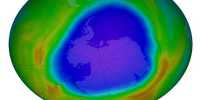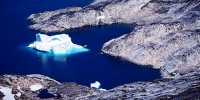In addition to gravel, sand is the world’s most exploited natural resource, surpassing fossil fuels. To make 32 billion to 50 billion tons of stuff per year to make concrete, to make glass for our mobile phones, and even to include ingredients made from sand in our toothpaste.
As Kiran Pereira, founder of SandStories.org once said: “It’s almost become like air, the air we breathe. We don’t think too much about it, but you can’t live without it.” The universal application of sand, however, has led to controlled and illegal mining in about 70 countries. The “sand mafias” who controlled some of its extraction and subsequent transactions were known to threaten and even kill workers who spoke out against their opponents.
Over the past decade, the so-called “sand war” has resulted in hundreds of deaths in countries like India and Kenya. If unstable exploitation of sand continues, we will see supply exceeding demand in the middle of this century, according to Nature’s Commentary. The safety part of this resource depends on our ability to monitor it, but a new study has found that we measure the sand incorrectly.
Associate Professor Ana Vila-Concejo from the University of Sydney, Australia, said in a statement, “Not all sand is the same.”Yet it depends on the models of sand determination and how it is removed. That means we don’t have a clear picture of what’s happening. “
Although standard models assume that sand grains are spherical, in the case of ordinary sand made with ground-down silica and quartz rock, it goes against other types of sand grains. Carbonate sand, for example, which comes from the shells, corals, and skeletons of marine animals, is best described as elliptical, less dense, and more hollow and edged.
As described in the study, published in Scientific Reports of Nature, when calculated for this, current models were found to have underestimated the surface area of carbonate sand by 35 percent. This has had a significant impact on the transport of this sand to the ocean floors, which is valued by more than 20 percent of existing models.
Vila-Concejo said, “That means we’re not properly accounting for the sand. To protect it, it is not only our ability to accurately monitor the sand but also to predict the response to climate change in areas where climate change threatens coastal erosion.
Dr. Tristan Salles, also from the University of Sydney, said in a statement, “It will become increasingly important to keep an eye on carbonate sand.” “If islands and atlas [ring-shaped coral walls] are at risk of erosion as a result of sea-level rise, it is important for them to understand how the protected sands will respond to ocean currents, waves, and high-energy ocean currents.”
Based on observations of carbonate sand taken from near Heron Island in the Great Barrier Reef, the team has developed a new transport for areas where this type of impact occurs. Vila-Concejo said, “How, why, and when the Polly measures are important in managing and predicting the effects of climate change and our new work will help develop mitigation and adaptation strategies.”















